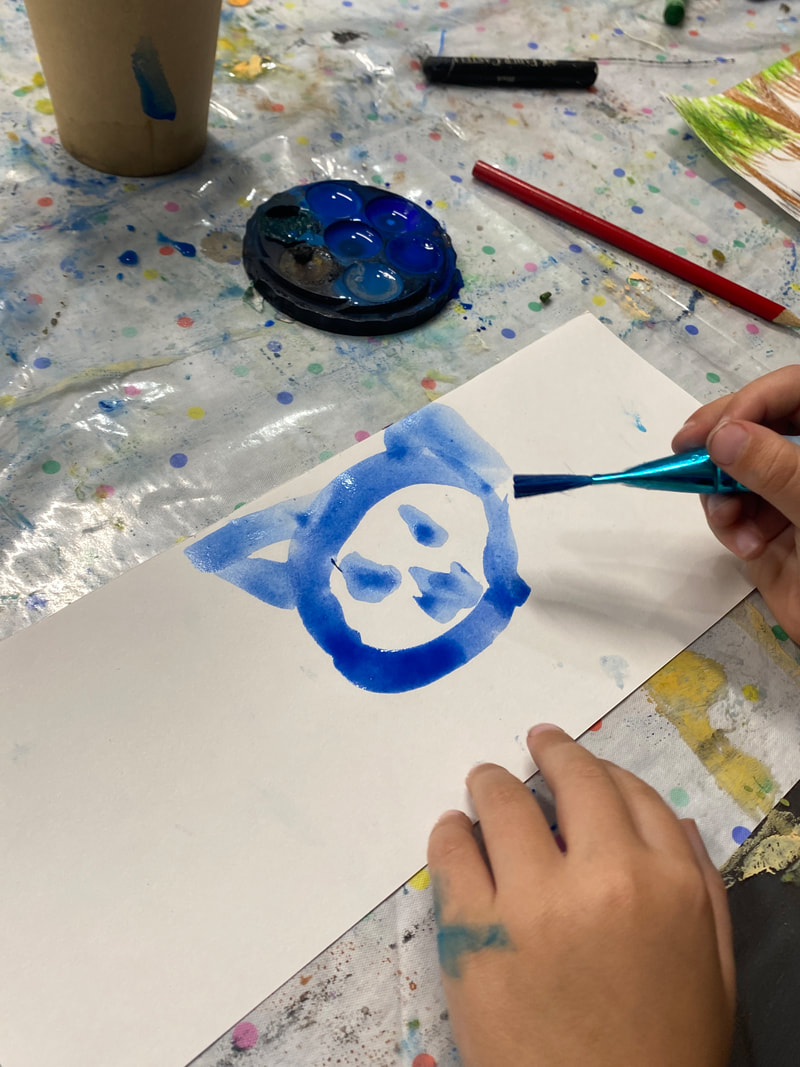|
Children can benefit from art in numerous ways, as it plays a crucial role in their cognitive, emotional, and social development. Here are some of the key benefits:
Creativity and Imagination: Art allows children to explore their creativity and imagination freely. It encourages them to think outside the box, come up with unique ideas, and express themselves in creative ways. Fine Motor Skills: Engaging in activities such as drawing, painting, and sculpting helps children develop their fine motor skills. These activities require precision and control of small muscles, which is essential for tasks like writing. Self-Expression: Art provides children with a means to express their thoughts, feelings, and experiences that they may not be able to articulate verbally. It can be a therapeutic outlet for processing emotions and communicating their inner world. Problem-Solving Skills: When children engage in art, they often encounter challenges and obstacles they need to overcome. This can stimulate their problem-solving abilities as they figure out how to make their creative vision a reality. Self-Esteem and Confidence: Completing art projects and receiving positive feedback can boost a child's self-esteem and confidence. It teaches them that they are capable of creating something valuable and unique. Cultural Awareness: Exposure to different forms of art from various cultures can broaden a child's perspective and increase their cultural awareness and sensitivity. Attention to Detail: Art encourages children to pay attention to details, colours, shapes, and patterns, which can enhance their observation skills. Communication Skills: Discussing their art or collaborating on art projects with peers can improve a child's communication skills. They learn how to express their ideas and listen to others' perspectives. Emotional Regulation: Art can help children regulate their emotions. It provides a safe space for them to process and release negative emotions, reducing stress and anxiety. Critical Thinking: Art can stimulate critical thinking by prompting children to analyze their work, make decisions about design and composition, and evaluate the effectiveness of their creations. Appreciation for Beauty: Engaging with art can instil an appreciation for beauty and aesthetics, whether in nature, culture, or everyday life. Persistence and Patience: Art often requires patience and perseverance. Children learn that achieving their artistic goals may take time and effort, teaching them valuable life skills. Cultural and Historical Understanding: Through art, children can learn about the history and culture of different societies. Artworks often reflect the values, beliefs, and social contexts of the time in which they were created. Social Interaction: Participating in group art activities, such as art classes or collaborative projects, can improve social skills and encourage teamwork and cooperation. Confidence in Non-Verbal Expression: For children who struggle with verbal expression, art provides an alternative means of communication, helping them feel more confident and understood. Encouraging children to explore and engage with art can have a positive and lasting impact on their overall development.
0 Comments
|
Mist GalleryPromoting regional artists and regional arts. Archives
October 2023
Categories |
- Home
- ABOUT
- EXPLORE + SHOP ARTISTS
-
SHOP by ART EXHIBITIONS
- Karen Hughes - Coastal Foraging
- BEC TALBOT - RESILIENT GRATITUDE
- AUTUMN SOIRÉE
- Damian Bisogni - New Works
- Island of the Gods - Andrew Cullen
- Guriaabu - Jason King
- MODERN SPACES
- SUMMER LOVE
- SUMMER SPOTLIGHTS
- Martin Munz - Art Imitate Life
- Scott McDougall - BIG SKY
- John Corby - Beauty In Our Own Backyard
- LOVE WHERE WE LIVE WORK and PLAY
- AN ARTIST A WEEK - 2023
- WOMEN OF THE TWEED
- HARVEST
- CLOSE TO NATURE
- PLACE IN THE SUN
- MEGAN COCHRAN - Earth + Human
- HABITAT
- STEVE TYERMAN - Breathing Space
- LAINE WALKER - Someone, somewhere in the Summertime
- DARE TO DREAM
- CHARIS
- Style de Maison
-
Love Where We Live II
- Brenda Bryant - Love Where We Live II
- Bruce Daniel - Love Where We Live II
- Francis Cloake - Love Where We Live II
- Helen Otway - Love Where We Live II
- John Corby - Love Where We Live II
- Kathryn Cleland - Love Where We Live II
- Kirsty Gautheron - Love Where We Live II
- Laine Walker - Love Where We Live II
- Megan Cochran - Love Where We Live ii
- Penelope Oates - Love Where We Live II
- Steve Tyerman - Love Where We Live II
- Mist Anniversary
- Jane Hoggard - Throughlines
- BOOKS AND GIFTS
- Stories
- Contact
- Product
- Untitled
- Home
- ABOUT
- EXPLORE + SHOP ARTISTS
-
SHOP by ART EXHIBITIONS
- Karen Hughes - Coastal Foraging
- BEC TALBOT - RESILIENT GRATITUDE
- AUTUMN SOIRÉE
- Damian Bisogni - New Works
- Island of the Gods - Andrew Cullen
- Guriaabu - Jason King
- MODERN SPACES
- SUMMER LOVE
- SUMMER SPOTLIGHTS
- Martin Munz - Art Imitate Life
- Scott McDougall - BIG SKY
- John Corby - Beauty In Our Own Backyard
- LOVE WHERE WE LIVE WORK and PLAY
- AN ARTIST A WEEK - 2023
- WOMEN OF THE TWEED
- HARVEST
- CLOSE TO NATURE
- PLACE IN THE SUN
- MEGAN COCHRAN - Earth + Human
- HABITAT
- STEVE TYERMAN - Breathing Space
- LAINE WALKER - Someone, somewhere in the Summertime
- DARE TO DREAM
- CHARIS
- Style de Maison
-
Love Where We Live II
- Brenda Bryant - Love Where We Live II
- Bruce Daniel - Love Where We Live II
- Francis Cloake - Love Where We Live II
- Helen Otway - Love Where We Live II
- John Corby - Love Where We Live II
- Kathryn Cleland - Love Where We Live II
- Kirsty Gautheron - Love Where We Live II
- Laine Walker - Love Where We Live II
- Megan Cochran - Love Where We Live ii
- Penelope Oates - Love Where We Live II
- Steve Tyerman - Love Where We Live II
- Mist Anniversary
- Jane Hoggard - Throughlines
- BOOKS AND GIFTS
- Stories
- Contact
- Product
- Untitled
LOCATION1b/51 Tweed Coast Rd, Cabarita Beach NSW 2488
|
|


 RSS Feed
RSS Feed
